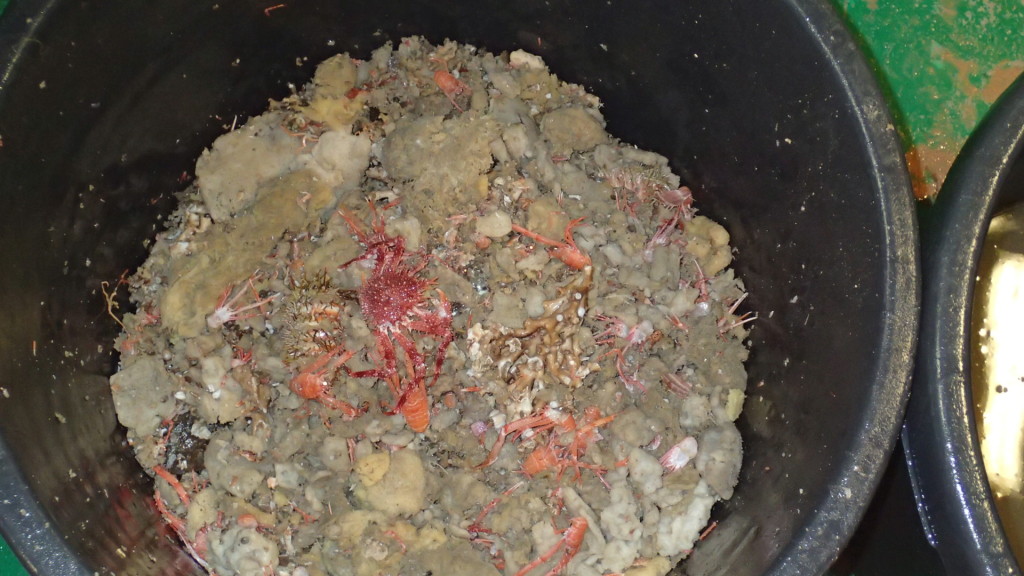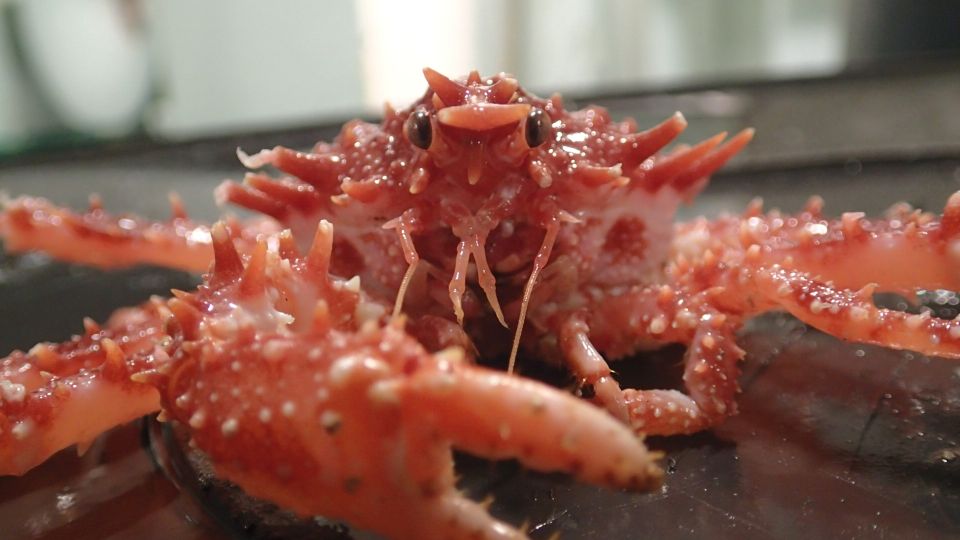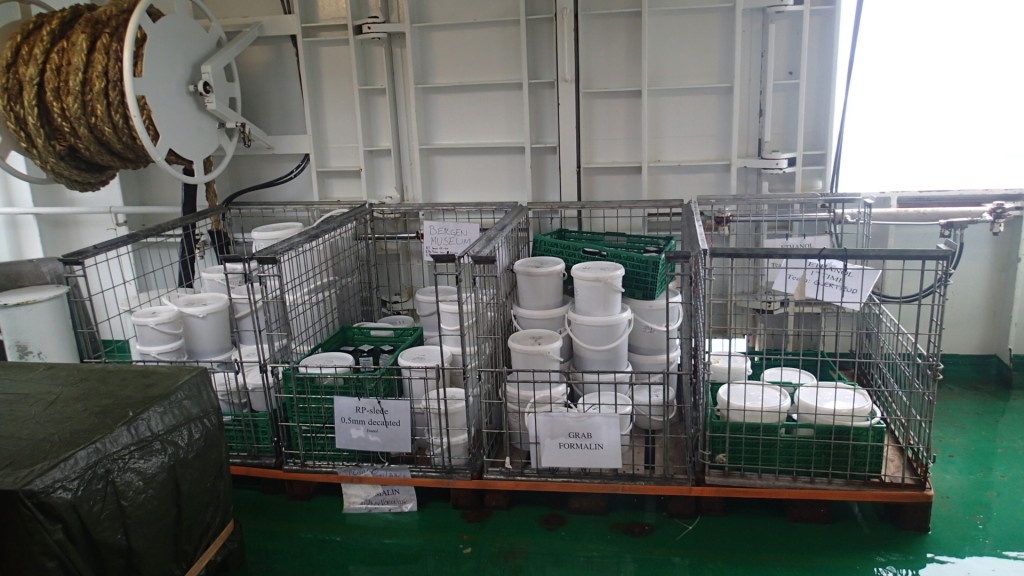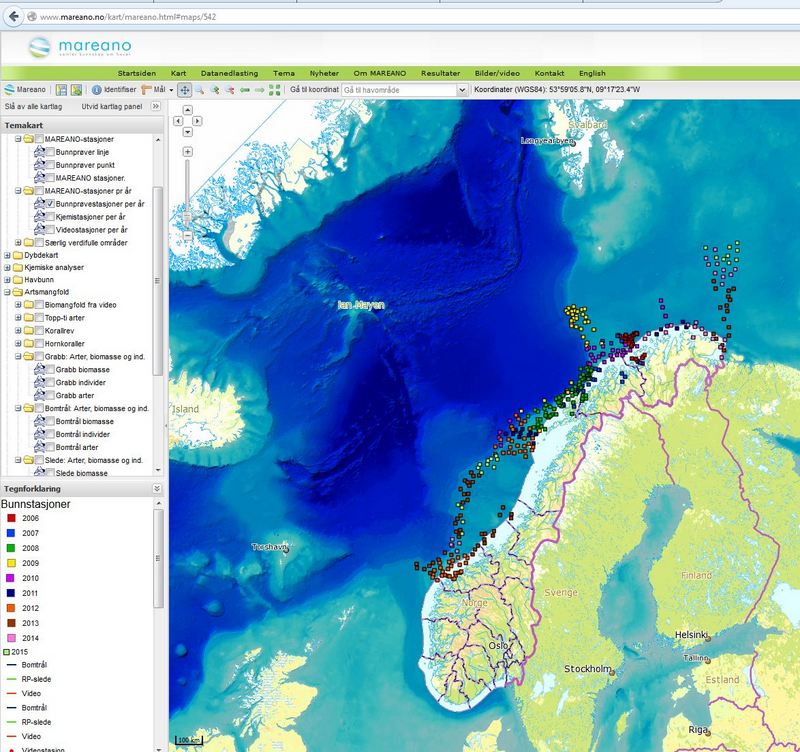Today’s critter is a Lithodes maja, or Northern stone crab (Trollkrabbe in Norwegian). They live in depths between 80-500 meters, where they feed on algae, bottom dwelling animals, and of scavenging. They are much smaller than their relatives the King crab (Paralithdodes camtschaticus), reaching up to 150 mm across the carapace.
Despite the name, they are not true crabs – Brachyura, but rather Anomurans: “As decapods (meaning ten-legged), anomurans have ten pereiopods (legs), but the last pair of these is reduced in size, and often hidden inside the gill chamber (under the carapace) to be used for cleaning the gills. Since this arrangement is very rare in true crabs (for example, the small family Hexapodidae), a “crab” with only eight visible pereiopods is generally an anomuran.” (Wikipedia)
Martin encountered this one when participating on this year’s final MAREANO survey in the Barents Sea. MAREANO has been working on mapping the depth and topography, sediment composition, contaminants, biotopes and habitats through a combination of video stations and physical sampling of sediments and animals in Norwegian waters since 2006.
A cruise typically lasts between 10 and 20 days, and for most years MAREANO has had 2-3 cruises. The amount of stations and collected material is staggering!

A bucket of beam trawl collected material – sponges and Munida (squat lobsters) are dominant, together with our friend from the picture above. Photo: M. Hektoen
Below is a map over the “full stations”, the stations that also include physical samples of biological material from grab, sled and trawl. These samples are split into fractions, some to be further processed by MAREANO, whilst others are bulk fixated without further analysis. The MAREANO-identified animals and unsorted fractions from these stations are deposited at the University Museum once MAREANO is done with them. We then continue to process them; decide which samples are significant, sort the unsorted fractions, implement material into the museum collections, and make it available for further research. For the interactive maps, go here.
-Martin & Katrine



